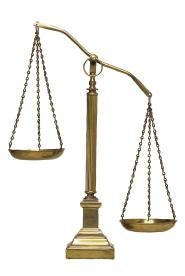As you may be well aware by now, the Internet and EB-5 Program blogs are abuzz with recent news that on Wednesday, February 6, the U.S. Securities and Exchange Commission (SEC) filed a complaint in U.S. District Court alleging a myriad of securities law violations against A Chicago Convention Center, LLC, Anshoo Sethi, and Intercontinental Trust Center of Chicago, LLC. Among other remedies currently being sought by the SEC, the court has already frozen the defendants’ assets and granted a temporary restraining order against further capital raising and other activities of the defendants.
Relevant Securities Law
Federal and state securities laws require the issuer of securities to provide prospective investors with full, fair and complete disclosure of all “material” facts about the offering, the issuer of the securities and the issuer’s management personnel, business, operations and finances. Information is “material” if a reasonable investor would consider the information important in making an investment decision. Materiality is a difficult concept to define. At minimum, information is material if you would not want to disclose such information because, if disclosed, potential investors would elect not to purchase the offered securities.
Further, simply disclosing material facts is not enough. When disclosed, the facts articulated must be developed fully so there is fair, full and complete disclosure. At the obvious level, for example, it is not sufficient to simply state that you own a building without also disclosing that the building is uninsured, has been damaged by Hurricane Sandy or has been condemned by the health department. At a more subtle level, you also must disclose, if applicable, that the building is subject to a mortgage and the amount of that mortgage. Although your statement about ownership would be true, it is incomplete and would be considered materially misleading. The existence of a mortgage affects the economic value and other attributes of ownership.
To assist clients with ensuring that their private placement memoranda (PPM) contains full, fair and complete disclosure, legal counsel should provide his or her clients with a due-diligence questionnaire requesting key information and related documents to support the factual statements made in the PPM. Counsel also should provide management with a directors, officers and key personnel questionnaire to elicit information that should be included in the discussion of each named director, officer or other key person’s business experience. Without such questionnaires, clients would not be aware that certain information is material from a securities law disclosure perspective.
Negligent Securities Fraud
A review of the complaint reminds us that, in addition to Section 10(b) of the Securities Exchange Act of 1934 (and Rule 10b-5(b) thereunder), the SEC has Section 17(a) of the Securities Act of 1933 in its arsenal to protect investors from fraud in the offer or sale of securities. Section 10(b), Rule 10b-5 and Section 17(a)(1) require the SEC to prove that the defendant acted with intent to “deceive, manipulate or defraud.” However, unlike Section 10(b) and Rule 10b-5, no specific intent is required to establish a claim under Sections 17(a)(2) or (3). Rather, Sections 17(a)(2) and (3) only require proof of negligence and, in that regard, focus “upon the effect of particular conduct on members of the investing public, rather than upon the culpability of the person responsible.” Accordingly, as you prepare or review PPMs for an anticipated project, failure to obtain documentation necessary to support and enable the draftperson to develop fully the factual statements made in the PPM (or to avoid omissions of material facts) may result in the SEC commencing a similar action to freeze assets and/or enjoin further capital raising activities based on a negligence theory under Section 17(a) rather than the more difficult standard imposed by Section 10(b) and Rule 10b-5 to demonstrate that the defendant acted with the intent to deceive, manipulate or defraud.


 i
i


